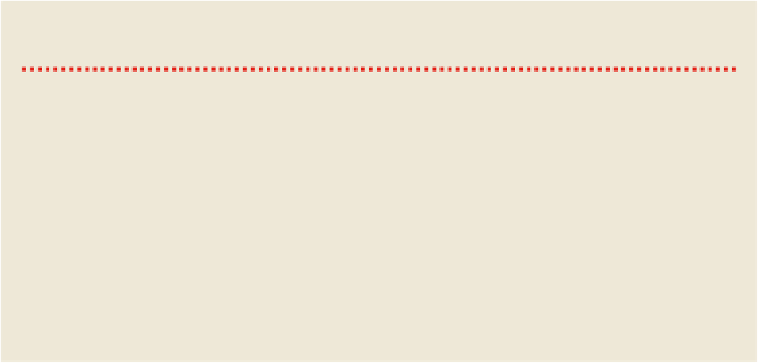Travel Reference
In-Depth Information
11am-6pm)
Food, wine and local music in Paihia
(
www.paihianz.co.nz/it_festival
;
adult/child $45/15;
on the last Saturday of October.
WORTH A TRIP
HOLD ON UNTIL KAWAKAWA
Kawakawa is just an ordinary Kiwi town, located on SH1 south of Paihia, but the public toilets (60 Gillies St) are
anything but. They were designed by Austrian-born artist and eco-architect Friedensreich Hundertwasser, who
lived near Kawakawa in an isolated house without electricity from 1973 until his death in 2000. The most photo-
graphed toilets in NZ are typical Hundertwasser - lots of organic wavy lines decorated with ceramic mosaics and
brightly coloured bottles, and with grass and plants on the roof. Other examples of his work can be seen in Vienna
and Osaka.
Kawakawa also has a railway line running down the main street. Take a 45-minute spin pulled by
Gabriel the
Steam Engine
(
021 171 2697;
www.bayofislandsvintagerailway.org.nz
; adult/child $20/5;
10.45am,
noon, 1.15pm, 2.30pm Fri-Sun, daily school holidays).
South of town, a signpost from SH1 points to
Kawiti Glowworm Caves
(
09-404 0583;
www.kawiticaves.co.nz
/
; 49 Waiomio Rd; adult/child $15/7.50;
8.30am-4.30pm). Explore the insect-illumin-
ated caverns with a 30-minute subterranean tour. Guided tours only.
Minibus tours from Paihia to Kawakawa and the caves are offered by Russell Mini Tours (
Click here
)
.
TOP OF CHAPTER
Russell
POP 720
Although it was once known as 'the hellhole of the Pacific', those coming to Russell for
debauchery will be sadly disappointed: they've missed the orgies on the beach by 170
years. Instead they'll find a historic town with gift shops and B&Bs, and, in summer, you
can rent kayaks and dinghies along the Strand.
Before it was known as a hellhole, or even as Russell, it was Kororareka (Sweet Pen-
guin), a fortified Ngapuhi village. In the early 19th century the tribe permitted it to be-
come Aotearoa's first European settlement. It quickly became a magnet for rough ele-
ments such as fleeing convicts, whalers and drunken sailors. By the 1830s dozens of
whaling ships at a time were anchored in the harbour. Charles Darwin described it in 1835
as full of 'the refuse of society'.
In 1830 the settlement was the scene of the so-called Girls' War, when two pairs of
Maori women were vying for the attention of a whaling captain called Brind. A chance
meeting between the rivals on the beach led to verbal abuse and fighting. This minor con-
flict quickly escalated as family members rallied around to avenge the insult and harm








